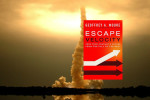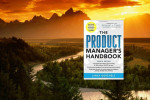The Three Horizons Model and Category Power

Manage your portfolio of businesses or products by using a three horizon model. Horizon 1 are current offerings; Horizon 3 are forward-looking bets; Horizon 2 is the bridge.
Escape Velocity by Geoffrey Moore
Although most businesses aspire to enter high growth categories, go-to-market considerations often conflict with portfolio management and result in resource allocation to low-growth, but highly material, products and services. The priority of current period revenue makes next generation offerings a lower priority in enterprise budgeting and planning processes. In Escape Velocity, Geoffrey Moore provides several frameworks for diagnosing this situation and recommends specific remedies to ensure future high-growth businesses can be funded and supported.
The Three Horizons
Introduced by Mehrdad Baghai, Steve Coley, David White and Stephen Coley in the The Alchemy of Growth, the Three Horizons Model is a framework for understanding and managing a portfolio of businesses or products to most effectively allocate resources and choose appropriate strategies.
Horizon 1 offerings are current businesses which are expected to be profitable and sustainable. Horizon 3 offerings are research & development efforts meant to deliver prototypes to early adopters. Horizon 2 provides the bridge from the current state to the future. Examples Moore gives for each horizon in the book are: flat panel TVs (horizon 1), internet service enabled TVs (horizon 2), and 3D TVs (horizon 3).
Success metrics
Each horizon has different success metrics: Horizon 1 success is measured by standard financial metrics (revenue vs plan, contribution margin) in the current fiscal cycle; Horizon 2 is measured by key performance indicators such as target accounts, sales velocity and deal size; Horizon 3 is measured by marquee customers, deal size and market awareness.
Being able to enter new categories and exit old ones is fundamental to freeing your company’s future from the pull of the past–but it not that easy.
Geoffrey Moore starts off the book with a business challenge: global competition has changed the rules of the game and US businesses no longer have the “home field advantage”. To combat this situation, they must innovate and grow their businesses outside current offerings. The key to success, writes Moore, is to create an “outside-in, market-centric perspective” and decide what the world wants the company to be. The barrier to achieving this goal is “the pull of the past [operating plan]” which manifests as internal budget and turf dynamics that prevent investments in forward-looking offerings. This situation is also described by Clayton Christensen’s The Innovator’s Dilemma.
Hierarchy of Powers
To achieve “escape velocity” requires activating the Hierarchy of Powers, Moore’s strategic framework comprised of Category Power (are you in a growth market category?), Company Power (what is your market share relative to your competitive set?, what are your crown jewels?), Market Power (what is your market share within a specific market segment?), Offer Power (what is the demand for your offering?), and Execution Power (can you outperform your competitive set?). Each of the powers is a lever that can wrench a company loose from entrenched business practices and stagnant investment decisions.
Category Power
Category power is a function of the demand for a given class of products or services relative to all other classes.
A fundamental characteristic of market categories is their lifecycle: emergence, growth, stability, decline, and end of life. Each phase requires a different set of strategies for effective innovation. Portfolio management involves allocating resources and offerings across these lifecycle phases with the goal of increasing the growth category.
Moore suggests that a category is material if it represents between 5 and 10 percent of either revenue or profit. He points out that most portfolios are heavily weighted towards low-growth, high-materiality offerings (which is representative of the escape velocity problem he identifies in the book) because today’s cash flow is frequently valued higher than a potential cash flow tomorrow. Of course, the ideal scenario is to invest in high-growth, high-materiality offerings, but that is often difficult to achieve due to the dynamics of the resource allocation process.
Escape Velocity
The barrier to investment in higher growth categories stems from the conflict between funding core business initiatives (horizon 1) and potential growth initiatives (Horizon 2). The goal is to leap the Horizon 2 gap by “escaping the pull of the past” and create a break-out product or service which is a 10x improvement over current market offerings. The primary challenge in crossing this chasm is that organizations will typically allocate funding to Horizon 1 efforts over Horizon 2 efforts. Because they are distant and speculative, Horizon 3 efforts do not usually draw funding away from Horizon 1; however, Horizon 2 competes for the same funding as Horizon 1.
Additionally, it takes more resources to generate a dollar of revenue in Horizon 2 than in Horizon 1. Horizon 1 products ship today, so they require today’s marketing dollars and sales resources. Horizon 2 products also tend to be incomplete and immature so they require professional services to implement and support.
Because each horizon has a different financial payoff model, there is a conflict between near-term and mid-term returns. Financial and corporate performance incentives will prioritize investments in Horizon 1 and thereby exert the drag that results in the classic disruptive innovation as described by Clayton Christensen.
To break free of this legacy mindset, Moore recommends four remedies:
- Use metrics appropriate to the time horizon, like sales to key accounts within a niche, to evaluate Horizon 2 products and services.
- Separate Horizon 1 from Horizon 2 budgets so that Horizon 2 initiatives don’t have to compete with Horizon 1 for dollars.
- Create temporary, virtually organized business units to own Horizon 2 initiatives instead of matrix efforts which reach into Horizon 1 businesses.
- Find M&A targets that will move Horizon 2 businesses into material revenue ranges.







Looks like a typo… It should say, “Horizon 1 products ship today, so they require today’s marketing dollars and sales resources.”
Thanks, Shawn! I updated the post.